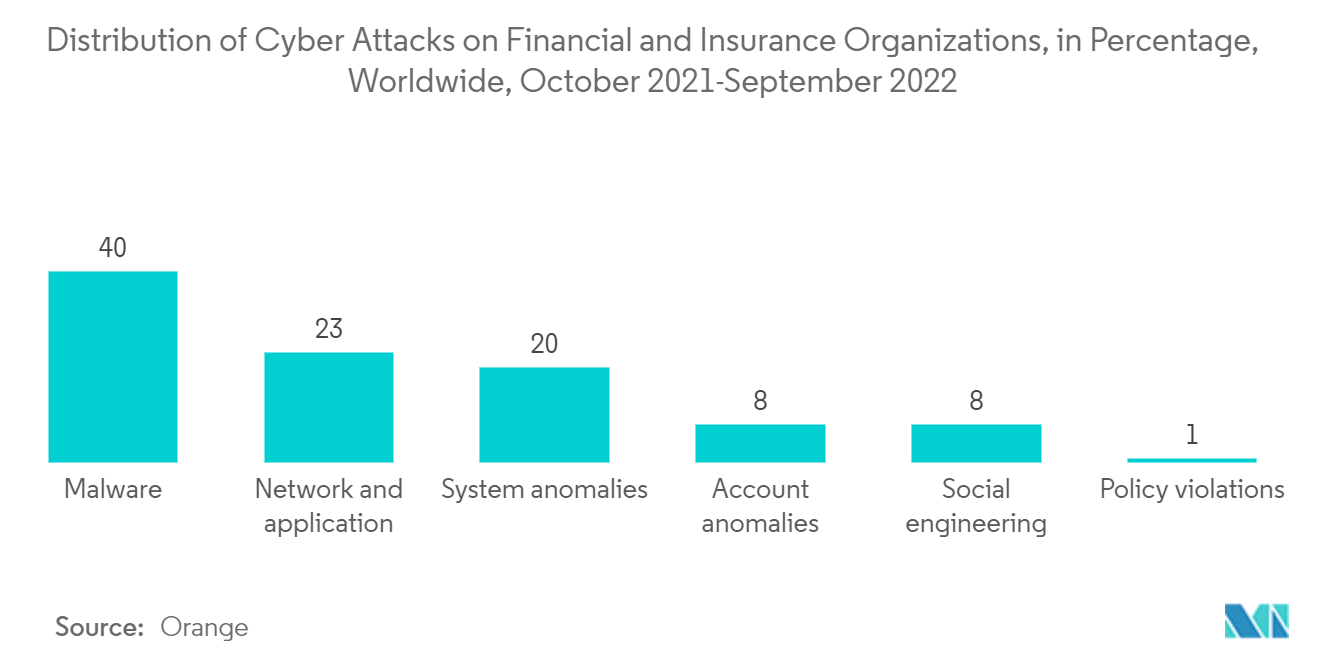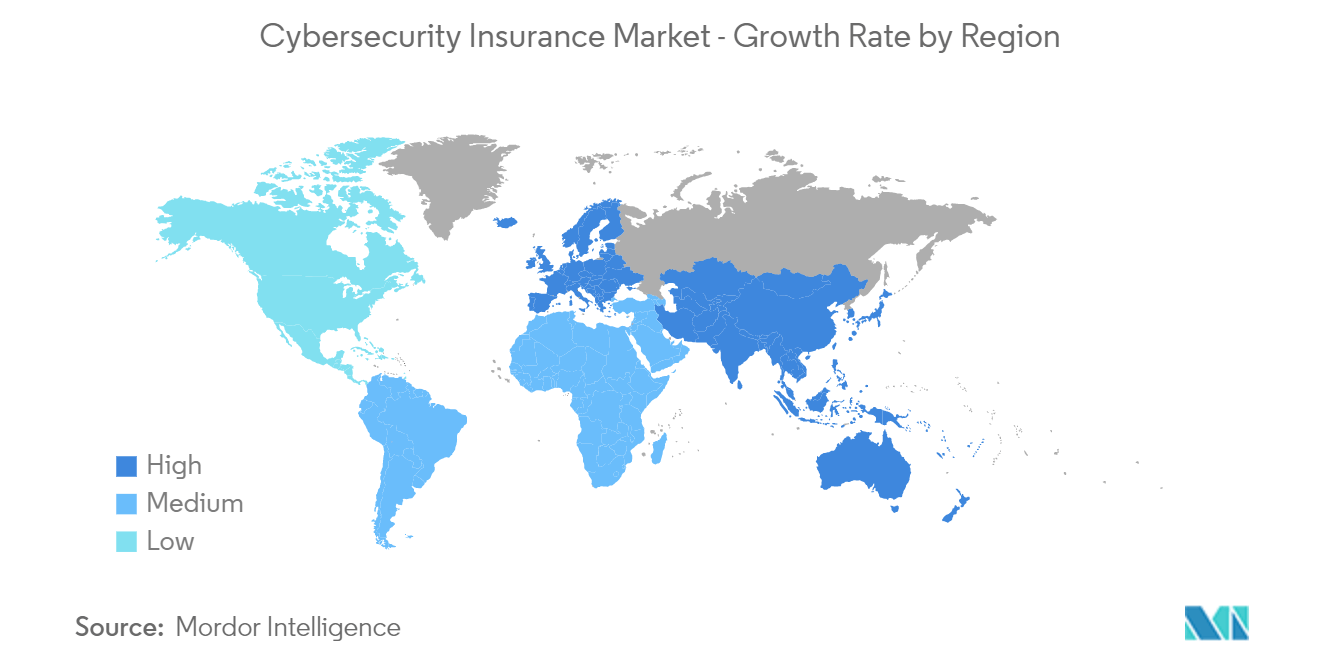Market Trends of Cybersecurity Insurance Industry
The BFSI Segment is Estimated to Hold a Significant Share
- The BFSI industry is one of the critical infrastructure segments facing multiple data breaches and cyberattacks, owing to the massive client base that the sector serves and the financial information at stake. Cybercriminals are optimizing myriad diabolical cyberattacks to immobilize the financial industry since it is a highly lucrative operating model with amazing profits and the bonus of relatively little risk and detectability. Trojans, ATMs, ransomware, data breaches, institutional invasion, data thefts, fiscal breaches, and other threats are all part of the threat environment for these attacks, which further necessitated the demand for cybersecurity insurance in the BFSI sector.
- For instance, according to the data from Orange, the malware was the most frequent form of cyber attack in financial and insurance organizations between October 2021 and September 2022. The attack vector targeted over 40% of the world's organizations. Network and application anomalies came in second, with 23% of organizations reporting such cyberattacks, followed by System anomalies with 20%.
- Cybersecurity Insurance is increasingly becoming a vital part of banking and financial institutions. The industry is expected to command a significant global market share during the forecast period. It is one of the highly regulated, governed industries and is also prone to identity frauds that augment demand, thus further proliferating the demand for the cybersecurity insurance market in the BFSI sector.
- For instance, in October 2021, the Federal Trade Commission issued an amended rule that increases the data security precautions financial institutions must implement to secure their clients' financial data. In recent years, consumers have suffered enormous suffering due to massive data breaches and cyberattacks, including monetary loss, identity theft, and other forms of financial misery. The revised Safeguards Rule from the Federal Trade Commission requires non-banking financial firms, such as mortgage brokers, car dealers, and payday lenders, to establish, implement, and maintain a robust security system to protect their clients' information. Government policies will significantly drive the market.
- With increased security breaches, banks and financial institutes should adopt cybersecurity insurance to safeguard their customers' data and prevent economic losses. For instance, in December 2021, a huge security breach at Bitmart, a crypto trading platform, resulted in hackers removing about USD 200 million in assets. A stolen private key was the primary source of the security compromise, which affected two of its Ethereum and Binance innovative chain hot wallets.

The United States is Expected to Hold the Major Share in the North American Region
- The United States is considered the world's most prominent cybersecurity insurance market. The country is also home to a significant number of key players operating in the market, which is another reason for the country's high share.
- Cyberattacks in the United States are rising rapidly and have reached an all-time high, primarily owing to the rapidly increasing number of connected devices in the region. In the United States, consumers are using public clouds, and many of their mobile applications are preloaded with their personal information for the convenience of banking, shopping, communication, etc.
- According to the White House Council of Economic Advisers, the US economy loses approximately USD 57 billion to USD 109 billion per year to harmful cyber activity. To minimize this loss due to cyber attacks, the solutions offered by cyber security insurance providers are essential, and the demand for cyber security insurance is increasing in the region.
- The region has been witnessing a significant number of data breaches over the years. According to the report published in 2022 by the Identity Theft Resource Center, 1,789 data breach incidents have been recorded. The high number of data breaches encourages organizations across various industries to opt for cybersecurity insurance, driving the market's growth.
- The United States government signed the law to establish Cybersecurity and Infrastructure Security Agency (CISA) to enhance the defense against cyber attacks. It works with the federal government to provide cybersecurity tools, incident response services, and assessment capabilities to safeguard the governmental networks that support essential operations of the partner departments and agencies. As a result, it will open new avenues for the new and existing companies to invest in suitable cyber security suite designed for this industry.


